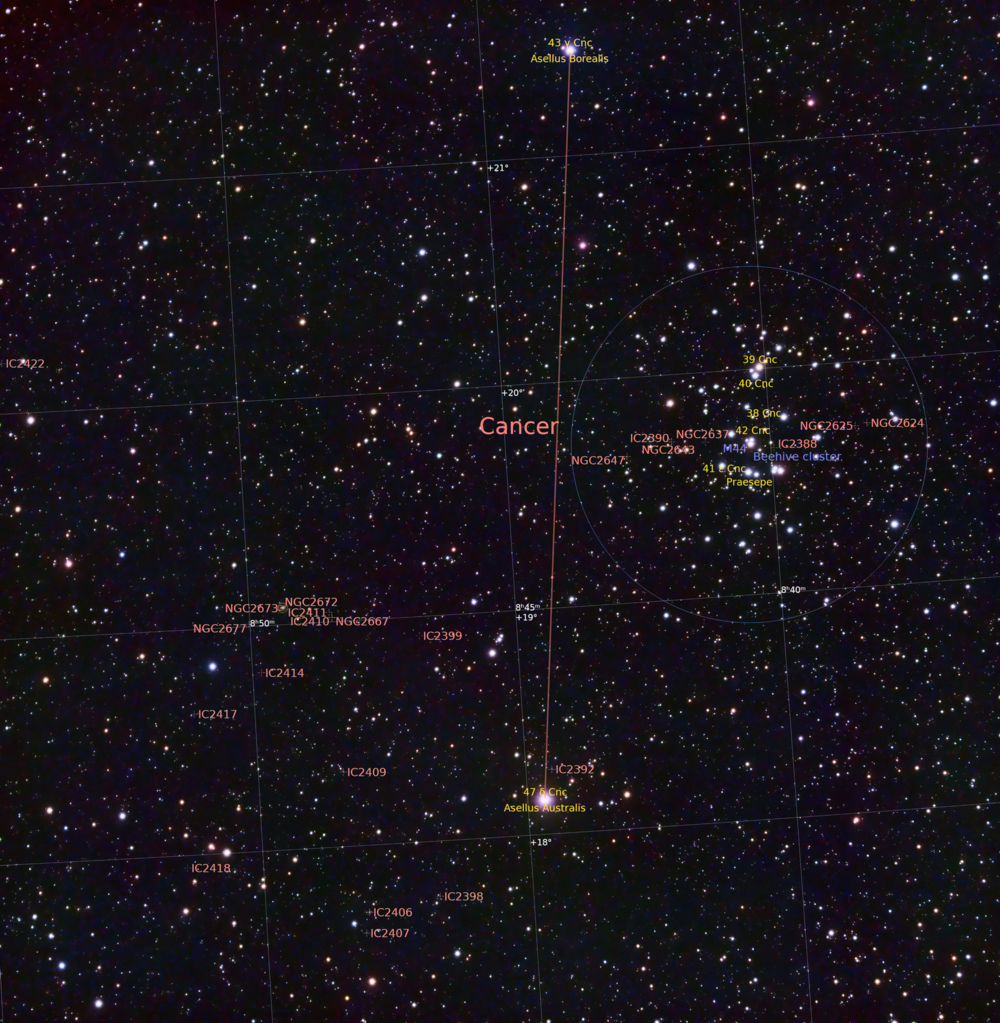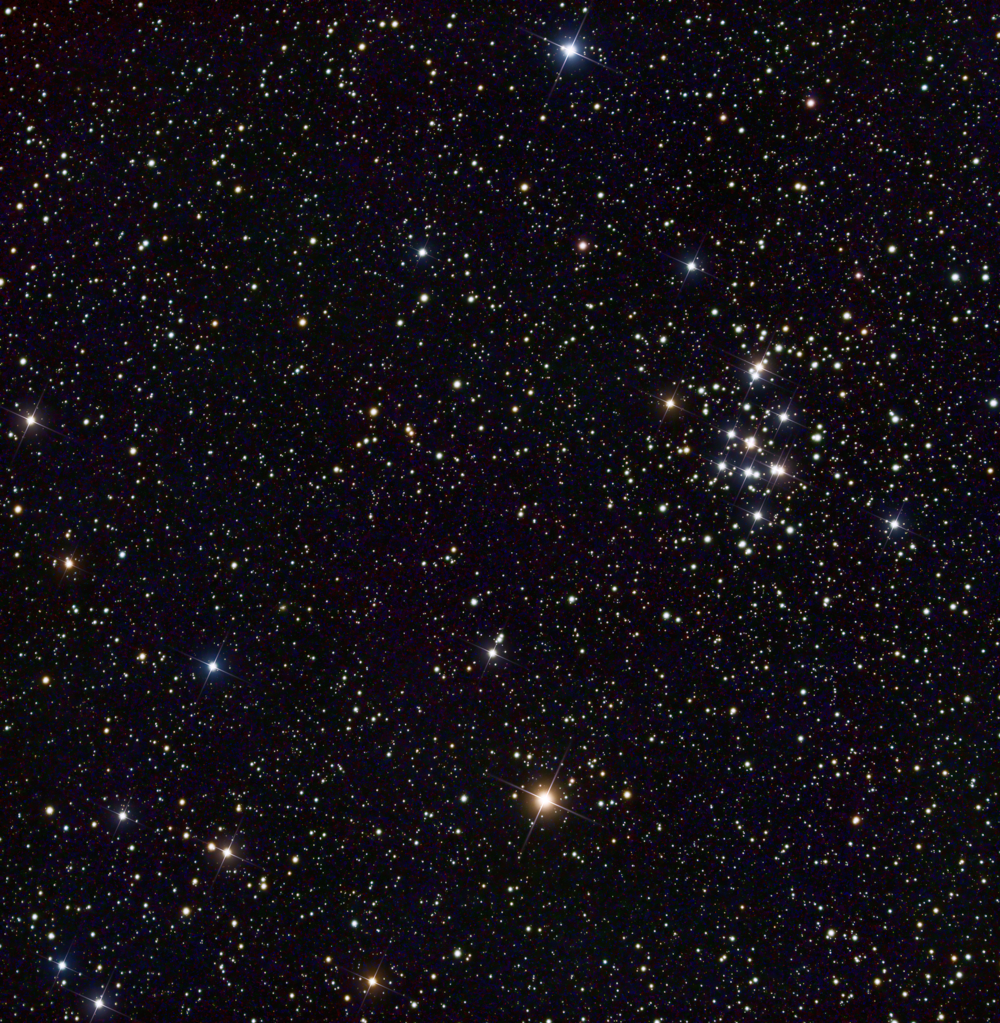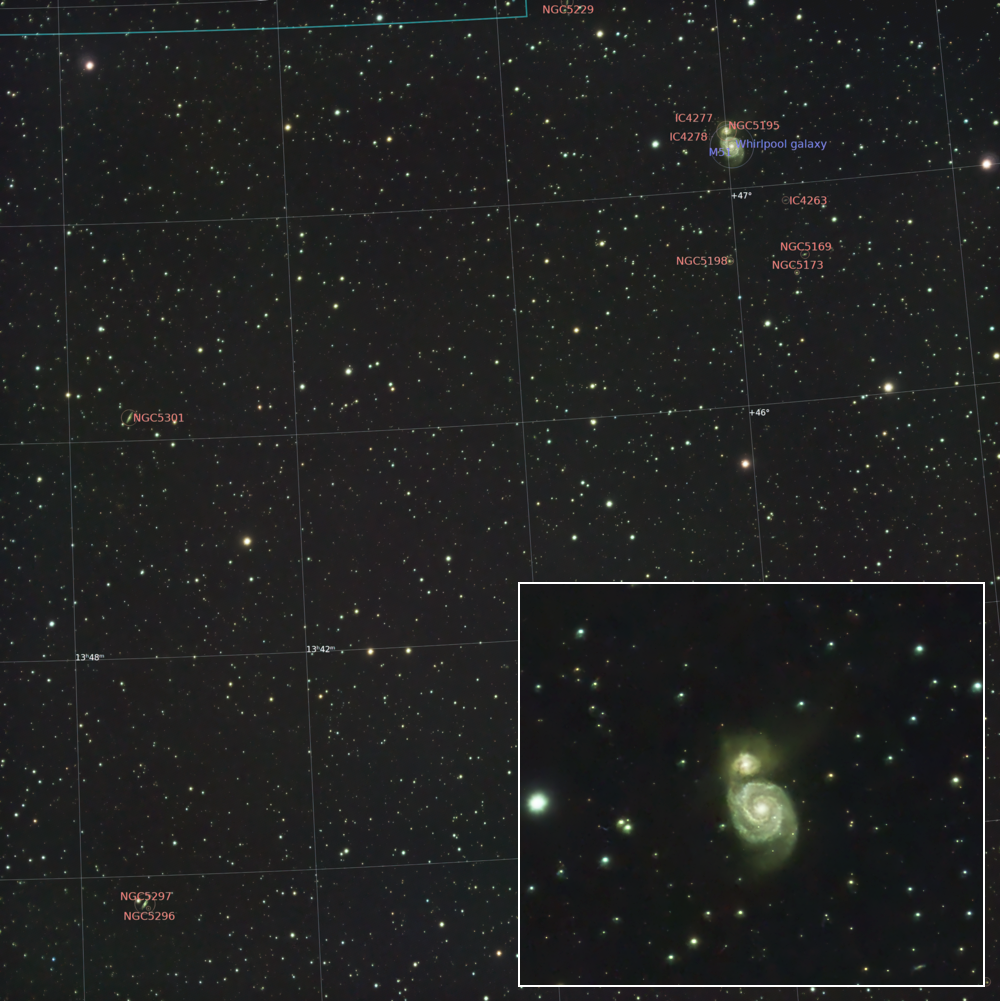January 2022
The year started out pretty bad – a single night of observations on January 13, 2022. I put the ASKAR 135mm f/4.5 APo to work, paired with a ZWO ASI 533 MC. A couple of targets for the night, M35, M44, M51, M87, M95, and NGC4565.

Messier 35 is an open cluster in Gemini with approx. 400 stars contained in a sphere of 11 light-years diameter. The image is made up from 30 individual photos with 70s exposure time each – a total of just 35 Minutes. The conditions were less than optimal with a Moon only five days from its 100%. The cluster itself is located at the upper edge of the image to allow for other objects to appear in the overview, namely IC443 and the NGC2174/NGC2175 complexes.
Next target up was Messier 44, also known as “Praesepe” or “Beehieve Cluster”, an open cluster located in the heart of the Cancer. It is a relatively easy target, given some acceptable dark skies and preferably some binoculars. This target requires a wide field of view although we will later see that a “close-up” is also gorgeous.

Speaking of “gorgeous” – the annotated version, of course, has its value but this one comes out a bit nicer when adding some star spikes and color.

Next up was Messier 51 – the famous “Whirlpool Galaxy” in Canes Venatici. The galaxy is some 23 light-years from Earth and I decided to take the photo covering the area between M51 in the upper-right corner and NGC5297, a spiral galaxy in 110 million light-years distance, in the lower-left corner.

A bit to the south of Canes Venatici are the three constellations Coma Berenices, Virgo, and Leo. They are holding large numbers of galaxies. The first wide-field is targeting Messier 95, a barred spiral galaxy some 33 million light-years away in Leo. It forms a group of two together with Messier 96 and a bit off is Messier 105 with NGC3384 and NGC3389.

Finally, the last image of that night went to NGC4565 in Coma Berenices, the well-known “Needle Galaxy”. The beautiful spiral galaxy that we are looking at “edge-on” is approx. 57 million light-years away. Again, it will be revisited later with the larger telescope.

That last photo concluded the January observation night – it was supposed to remain the only night that month and only at the end of February, it would clear up again.
